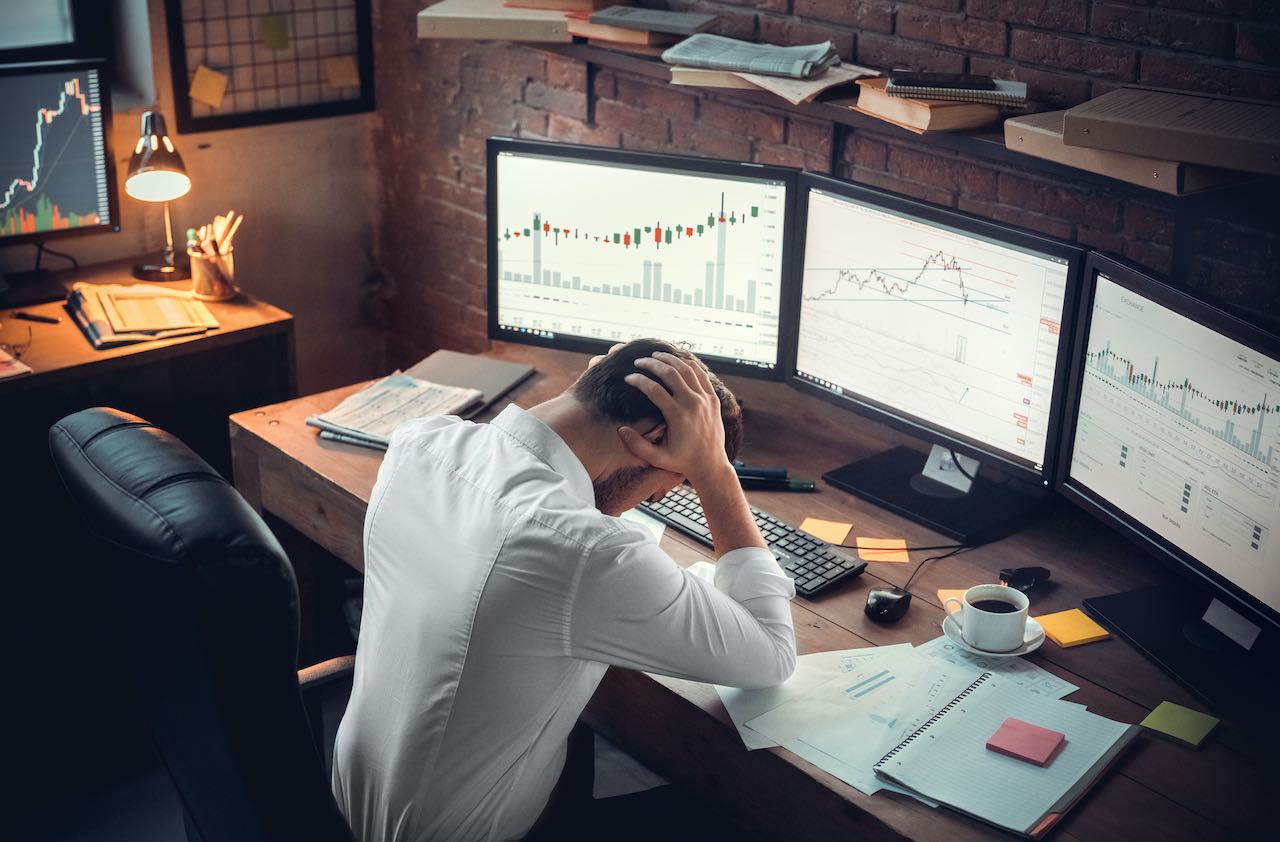When to Stick with a Mutual Fund and When to Sell
Patience for a struggling fund can pay off. Except when it doesn't. Here's help making this difficult call.

Why is it so tough to know when to fish and when to cut bait? Because even the very best funds go through wretched stretches, sometimes lasting three years or more.
Morningstar illustrated this by looking at 202 actively managed mutual funds with top-notch, 10-year records through last February. All received Morningstar’s highest analyst ratings (gold, silver or bronze), produced returns that ranked in the top 25% of their categories over the past 10 years, and had at least one manager who was around for the entire 10-year period.
The results: 71% of these sterling funds trailed their peers in at least three of the past 10 calendar years ending in 2014. What’s more, 90% of the funds lagged their peers in at least two years. More than half of the funds posted at least two consecutive years of below-par returns.
From just $107.88 $24.99 for Kiplinger Personal Finance
Become a smarter, better informed investor. Subscribe from just $107.88 $24.99, plus get up to 4 Special Issues

Sign up for Kiplinger’s Free Newsletters
Profit and prosper with the best of expert advice on investing, taxes, retirement, personal finance and more - straight to your e-mail.
Profit and prosper with the best of expert advice - straight to your e-mail.
The figures suggest that patience pays when you invest in mutual funds. When a good fund hits the skids for a year, or even two consecutive years, most of the time you’ll be better off not selling. If you do sell, you face the danger of bailing out just as a fund is regaining its stride.
For example, AMG Yacktman Service Fund (symbol YACKX) has lagged Standard & Poor’s 500-stock index in each of the past three calendar years—and is trailing again so far in 2015. The father-and-son team of Don and Steve Yacktman, along with comanager Jason Subotky, have proved to be adept stock pickers. But they do best in markets that reward defensive blue-chip stocks. With 38% of its assets in stocks of companies involved in consumer necessities, this Yacktman fund will likely excel in the next bear market. Over the past 15 years, Yacktman Service beat the S&P 500 by an average of 8.7 percentage points per year. (All individual fund returns in this article are through May 10.)
Dodge & Cox Stock (DODGX) is a similar story. This superb large-company value fund trailed the S&P in 2007, 2008, 2010 and 2011 before regaining its form. Its investment style was out of favor for four years out of five. But over the past 15 years, it has topped the S&P by an average of 4.1 percentage points per year.
Patience, however, isn’t always a virtue. Bill Miller is the poster child for the dangers of hanging on. From 1991 through 2005, ClearBridge Value (LMVTX), the fund he managed, topped the S&P each year. (Until recently, the fund was named Legg Mason Value.) Then came the 2007-09 bear market. The S&P lost 43.3% during that conflagration, but Miller’s fund did even worse, plunging 59.4%. Since 2010, the fund—without Miller since April 2012—has beaten the S&P in just one calendar year.
Nor is Bill Miller alone. Quite a few managers have been hot for years and then collapsed. Bruce Berkowitz, manager of Fairholme Fund (FAIRX), and Kenneth Heebner, who runs CGM Focus (CGMFX), are just two examples.
How can you tell whether you own a bad fund or one that has merely hit a rough patch?
The first thing to consider is volatility. Funds that swing for the fences, such as Miller’s former charge, often deliver huge attention-grabbing gains. But the fund is volatile. If a fund’s standard deviation, a measure of volatility, is much higher than the S&P’s, consider pulling the plug. Over the past three years, the S&P 500’s standard deviation was 9.52. Standard deviations are available at Morningstar.com and other investing Web sites.
Next revisit the basics of picking funds. High expense ratios and managers who choose not to invest much in their own funds are red flags. A lot of manager turnover, as well as a lot of trading, are yellow caution flags. So are subpar, long-term risk-adjusted returns. Alphas and Sharpe ratios are good measures of risk-adjusted returns. You can find these numbers at Morningstar.com, too.
When deciding whether to sell or hold, look for a good explanation from the fund’s sponsor about recent returns. To cite one example, FPA Crescent (FPACX), a member of the Kiplinger 25, has badly lagged the S&P during the current bull market. But as the stock market has climbed, the fund’s managers, led by Steve Romick, have increased its cash stake to about 45% of assets because they been increasingly unable to find stocks that meet his tough criteria. This fund is a keeper.
Steve Goldberg is an investment adviser in the Washington, D.C., area.
Profit and prosper with the best of Kiplinger's advice on investing, taxes, retirement, personal finance and much more. Delivered daily. Enter your email in the box and click Sign Me Up.

-
 The Stoic Retirement: Ancient Wisdom for Today's Reality
The Stoic Retirement: Ancient Wisdom for Today's RealityA "Stoic retirement" doesn't mean depriving yourself. It's a character-based approach to life and aging that can bring calm and clarity.
-
 My Teen Crashed His Car and Now Our Insurance Has Tripled. What Now?
My Teen Crashed His Car and Now Our Insurance Has Tripled. What Now?Dealing with the costly aftermath of a teen car accident is stressful. Here are your options for navigating it.
-
 11 Outrageous Ways To Spend Money in Retirement
11 Outrageous Ways To Spend Money in RetirementWhether you have excess cash to spend or want to pretend, here’s a look at 11 ridiculous ways retirees can splurge.
-
 ESG Gives Russia the Cold Shoulder, Too
ESG Gives Russia the Cold Shoulder, TooESG MSCI jumped on the Russia dogpile this week, reducing the country's ESG government rating to the lowest possible level.
-
 Morningstar Fund Ratings Adopt a Stricter Curve
Morningstar Fund Ratings Adopt a Stricter Curveinvesting Morningstar is in the middle of revamping its fund analysts' methodology. Can they beat the indices?
-
 Market Timing: The Importance of Doing Nothing
Market Timing: The Importance of Doing NothingInvestor Psychology Investors, as a whole, actually earn less than the funds that they invest in. Here’s how to avoid that fate.
-
 Commission-Free Trades: A Bad Deal for Investors
Commission-Free Trades: A Bad Deal for Investorsinvesting Four of the biggest online brokers just cut their commissions to $0 per transaction. Be careful, or you could be a big loser.
-
 Vanguard Dividend Growth Reopens. Enter at Will.
Vanguard Dividend Growth Reopens. Enter at Will.investing Why you should consider investing in this terrific fund now.
-
 Health Care Stocks: Buy Them While They're Down
Health Care Stocks: Buy Them While They're Downinvesting Why this sector should outperform for years to come
-
 Buy Marijuana Stocks Now? You'd Have to Be Stoned.
Buy Marijuana Stocks Now? You'd Have to Be Stoned.stocks Don't let your investment dollars go to pot
-
 4 Valuable Lessons From the 10-Year Bull Market
4 Valuable Lessons From the 10-Year Bull MarketInvestor Psychology Anything can happen next, so you must be mentally prepared.